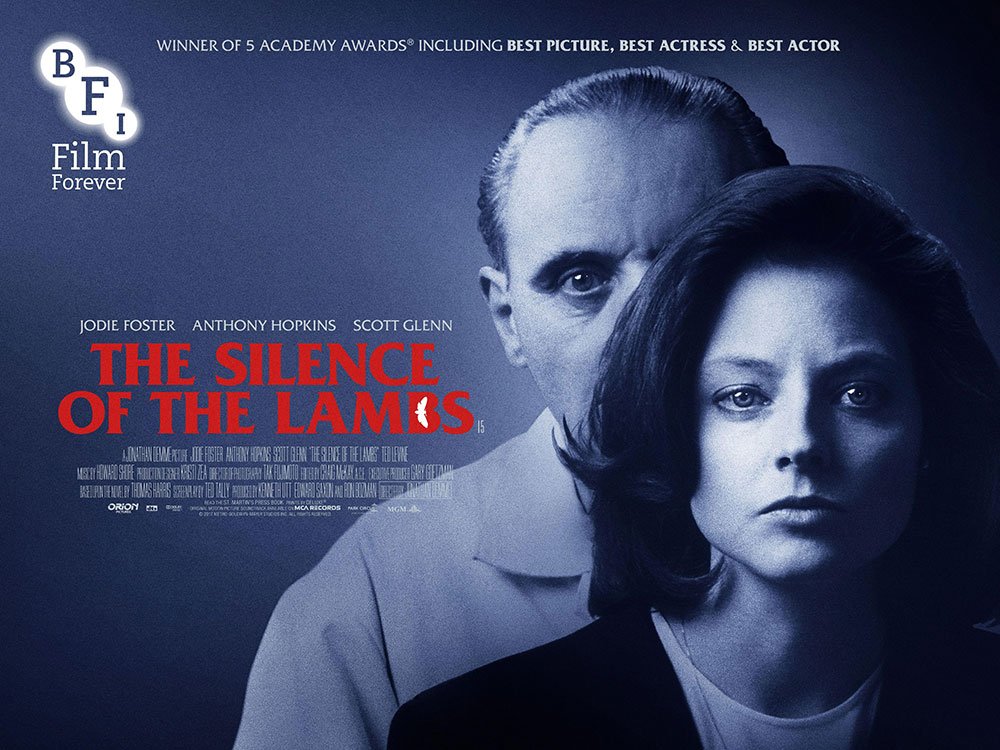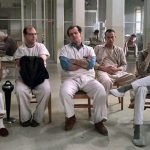The silence of the lambs (1991)

“The Silence of the Lambs” (1991) is a psychological horror-thriller directed by Jonathan Demme and based on Thomas Harris’s novel of the same name. The film is renowned for its intense performances, gripping narrative, and chilling atmosphere. Here’s an in-depth review:
Plot and Characters
“The Silence of the Lambs” follows FBI trainee Clarice Starling (Jodie Foster) as she seeks the help of imprisoned cannibalistic serial killer Dr. Hannibal Lecter (Anthony Hopkins) to catch another killer, known as “Buffalo Bill,” who is abducting and murdering young women.
- Clarice Starling (Jodie Foster): Foster delivers a powerful performance as Starling, a determined and empathetic young agent facing the challenges of her career and the sinister mind games of Lecter. Her character is central to the film’s exploration of psychology and courage.
- Dr. Hannibal Lecter (Anthony Hopkins): Hopkins’s portrayal of Lecter is iconic, blending charisma with malevolence. His chilling calmness and intellectual prowess make him one of cinema’s most memorable villains. Hopkins won an Academy Award for Best Actor for this role, and his performance is a masterclass in creating psychological tension.
- Buffalo Bill (Ted Levine): The antagonist of the film, Buffalo Bill is a disturbed individual who skins his victims. Levine’s performance is unsettling and adds to the film’s sense of dread and horror.
- Jack Crawford (Scott Glenn): An experienced FBI agent and Starling’s mentor, Crawford’s role is crucial in providing support and guidance to Starling. Glenn’s portrayal adds depth to the procedural aspects of the film.

Direction and Style
Jonathan Demme’s direction in “The Silence of the Lambs” is noted for its meticulous attention to psychological detail and its ability to create suspenseful and claustrophobic atmospheres.
- Cinematography: The film’s cinematography, by Tak Fujimoto, is notable for its close-ups and use of shadows, which heighten the psychological tension and create an intimate connection between the audience and the characters.
- Editing: The editing, by Craig McKay, contributes to the film’s tight pacing and intense mood. The film’s structure effectively balances character development with suspenseful moments.
- Sound and Music: Howard Shore’s score, combined with the film’s sound design, enhances the sense of unease and psychological tension. The music underscores key moments and heightens the film’s eerie atmosphere.

Themes and Legacy
“The Silence of the Lambs” delves into themes of power, control, and the nature of evil, offering a profound psychological exploration of its characters.
- Psychological Tension: The film’s portrayal of the cat-and-mouse dynamic between Starling and Lecter is a central element, exploring themes of manipulation, fear, and psychological insight.
- Empowerment and Vulnerability: Clarice Starling’s character embodies both strength and vulnerability, navigating a male-dominated field and facing her own fears. Her journey is both a personal and professional one, making her a compelling and relatable protagonist.

Pros and Cons
Pros:
- Outstanding performances, particularly by Jodie Foster and Anthony Hopkins.
- Masterful direction and a gripping, suspenseful narrative.
- Intense psychological and emotional depth.
- Iconic and influential in the thriller and horror genres.
Cons:
- The film’s graphic content and intense themes may be disturbing for some viewers.
- Its dark and psychological nature may not appeal to those preferring lighter fare.
Overall, “The Silence of the Lambs” is a landmark in psychological thrillers, distinguished by its exceptional performances, masterful direction, and intense exploration of its themes. It remains a powerful and influential film that continues to captivate and unsettle audiences.











